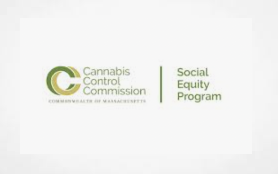The Pacific Daily News reports…
Recreational cannabis products sold on Guam must be clearly labeled “KEEP OUT OF REACH OF CHILDREN AND ANIMALS,” and all cannabis-infused food must be sold in child-resistant packaging, according to the proposed rules and regulations for the island’s recreational cannabis industry.
The rules and regulations, written by the Cannabis Control Board, currently are being reviewed by the administration before a public hearing, which is required by law before they can be adopted.
The timing of the public hearing depends on pandemic restrictions, according to cannabis board Chairwoman Vanessa Williams, who said the public will need access to the Department of Revenue and Taxation in order to review a copy of the proposed rules and regulations, as required by Guam law. Rev and Tax will be the primary licensing and enforcement agency for the recreational cannabis industry.
CWilliams said the cannabis board also plans to post the document online. But Guam’s Administrative Adjudication law states the rules and regulations also must be available for public review at the agency at least 10 days before the public hearing.
All government of Guam agencies currently are closed to the public because of the governor’s stay-at-home order, which is scheduled to expire Sept. 11 unless further extended. If the order is lifted, government agencies are allowed to provide restricted public access while the island is in Pandemic Condition of Readiness 1.
The rules and regulations provide for government licensing of three different aspects of the cannabis industry: cultivation, testing, manufacturing and retail. They require businesses to obtain all other necessary government permits, in addition to the cannabis permit, before they can operate their facilities.
Recreational cannabis has been legal on Guam since April 2019, and adults 21 years and older can legally consume it in private, possess it in public and grow it at home, with limits on the number of plants that can be grown at the same time. But selling it or trading it for anything of value remains illegal until the rules and regulations are in place and until the government’s seed-to-sale tracking system is operating.
Some of the recreational cannabis industry requirements already are spelled out in Guam law, including a 15 percent excise tax, levied on the sale of cannabis by cultivators to retailers or manufacturers.
The law requires 50 percent of the excise tax to be deposited to the “Cannabis Fund,” with the money distributed to the Department of Public Health, the Guam Police Department, the Guam Customs and Quarantine Agency, Rev and Tax, the Department of Agriculture and the Guam Behavioral Health and Wellness Center.
The law also created a separate fund, called the “Cannabis Control Fund,” which will receive the money collected from licensing fees, fines and other enforcement charges. The law states 60 percent of that money shall be appropriated to the Guam Behavioral Health and Wellness Center for substance abuse education, treatment and prevention. The rest of the money can be appropriated by lawmakers each year.
The rules and regulations include several labeling requirements, which means marijuana products sold on Guam would be covered in stickers and labels with full lists of ingredients, serving sizes and mandatory warnings – including a warning that smoking is hazardous to your health.
Cannabis businesses must be locally owned – at least 51% – by someone who has lived on Guam for at least three straight years, the rules and regulations state.
The recreational cannabis industry must operate using locally acquired seeds, the rules and regulations state, because importing cannabis to the island is prohibited.
Finding cannabis seeds on Guam shouldn’t be a problem.
Cannabis board members, during a meeting in January, said there already is a robust illegal cannabis industry on island which produces about three tons of cannabis per year. The legal market needs to at least match that production in order to undercut the illegal market, board members reported. Depending on the size of the growing facilities, two to eight licensed cultivators could match that production, board members reported.
Here is a summary of some of the proposed licensing and operating requirements:
Cannabis testing facilities
Initial application and license fees are $4,000, with an annual $2,000 operating fee;
The rules and regulations do not mention site restrictions or security requirements for these facilities, but Guam law prohibits cannabis facilities from operating within 1,000 feet of a school or a school bus stop. The rules and regulations state the facility must meet national accreditation standards in order to operate;
All cannabis products must be tested for potency and safety by an independent licensed facility before they can be sold to a consumer;
Testing facilities must conduct their tests using random samples of cannabis at the different licensed cannabis operations;
The facility shall issue a report to the government and to the cannabis establishment with the results of the chemical analysis;
Cultivation facilities
Can operate only on property zoned agricultural or industrial;
Applicants must provide a site plan and receive clearances from all appropriate agencies;
Initial application and license fees are $5,000 for small commercial facilities; $10,000 for mid-size commercial facilities; and $20,000 for large commercial facilities. There also is an annual permit fee for those facilities, which costs $2,000, $5,000 and $15,000, respectively;
The rules and regulations allow for cottage industry “micro cultivation” licenses, which cost $1,000 to start, with a $600 annual permit fee;
All cannabis must be grown without using synthetic or nonliquid fertilizers;
It must be grown: in a fully enclosed indoor facility; outdoors, in greenhouses; or in the open, provided there are barriers to obscure public view and the site is surrounded by a fence at least 10 feet tall;
All cannabis waste must be rendered unusable, with records of its disposal.
Manufacturing facilities
Can operate only on property zoned agricultural or industrial;
Applicants must provide a site plan and receive clearances from all appropriate agencies;
Initial application and license fees are $10,000, with an annual $5,000 operating fee;
Cannot manufacture cannabis-infused products that are “especially appealing to children” including gummy candies, lollipops, cotton candy and brightly colored products;
Foods that can spoil and become a health hazard cannot be infused with cannabis;
The amount of inventory on site is limited to six months of their average usable cannabis;
All employees must wear an employer-issued identification badge at all times and the business must keep a log of all visitors to the facility;
All entry points to the facility must have an alarm and the facility must have a complete high-resolution video surveillance system;
When cannabis is transported between licensed businesses, it must be moved out of public view, in unmarked vehicles, with all loading and unloading performed in full view of security cameras;
Retail cannabis stores
Can operate only on property zoned commercial, agricultural or industrial;
Applicants must provide a site plan and receive clearances from all appropriate agencies;
Initial application and license fees are $10,000, with an annual $5,000 operating fee;
Only licensed employees can touch or handle cannabis products;
Stores cannot transfer their cannabis products to any other store;
Must require customers to show I.D., and cannot sell more than the “allowable amount,” which is one ounce of cannabis per customer;
All entry points must have commercial grade locks or security devices and have an alarm system. A video surveillance system also is required, with cameras pointed at entrances and controlled areas.

















